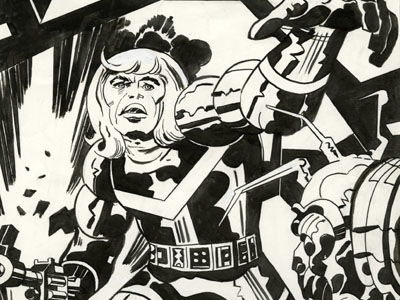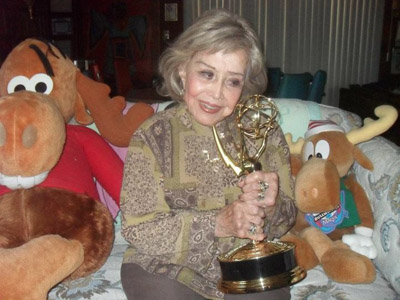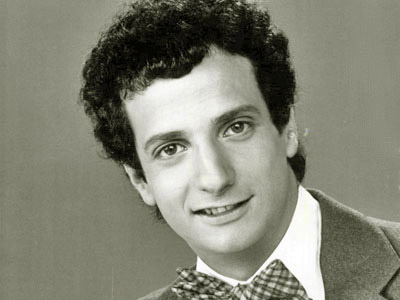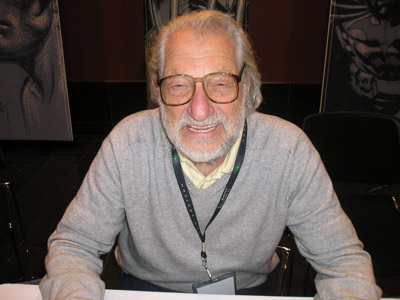
Science-fiction author Harry Harrison has died at the age of 87. He wrote many books but was probably best-known for Make Room, Make Room!, which was turned into the movie, Soylent Green. The one time I met and interviewed Mr. Harrison, I believe he told me that once you factored in the movie money, that book had made him more money than any ten others combined and given him a thousand times the recognition.
Tom Spurgeon has a full obit but I did want to clarify and expand upon what I understand about Harrison's career in comics. It was more or less the failure of that which made him, to his eventual delight, a novelist. When he got out of the service in 1946, he used his G.I. access to higher education and attended what was later called the Cartoonists and Illustrators School in New York. There, he met and learned alongside dozens of students who later became well-known, successful comic book artists. One of them was Wally Wood.
Wood was shy and withdrawn and quite terrified about approaching editors with his work. Harrison was nowhere near as good an artist as Wood but he was a lot better at "selling" and talking to buyers. For obvious and mutual reasons, they decided to team up and they modeled their partnership more or less on how Joe Simon and Jack Kirby operated. Both Joe and Jack did everything — writing, penciling, inking, editing, etc. — but Simon spent more of his time writing, editing and dealing with publishers while Kirby spent more time writing and drawing. In the Harrison-Wood parlay, Harrison would be approximately Simon while Wood was roughly Kirby.
Around late 1947, they began approaching comic book companies and what they were looking for at each was a "packaging" arrangement, which was what Simon 'n' Kirby did. In effect, packagers became editors for the company on an outside basis. They would write and draw comics and when necessary, hire others to work with them. This was a fairly common arrangement in comics in the early forties when Simon and Kirby were starting out together but by '48, publishers were less inclined to make such deals. They preferred to have an in-house editor do all the buying and to not lavish editorial money (or meaningful creative control) on outsiders.
And even if a publisher might have been inclined to engage Harrison-Wood as an outside packager, there was this problem: Despite Harry's fine salesmanship, he couldn't really get to those publishers themselves. He could only "sell" himself and Wally to their in-house editors…and the in-house editors all hated outside packagers. In an employment context, outside packagers were their competition.
So Harrison and Wood couldn't secure a packaging deal. If they had, it's likely Harrison would have cut his drawing way back and done mostly editing and writing, leaving most of the art to Wood. But Wood, who proved himself to be a pretty good writer, would also have had opportunities to write that he generally did not get in his real career.
That might have worked very well. But they not only couldn't get packaging work but there was then a surplus of writers in comics, the decline of the pulp magazines having brought a flood of writing talent into the field. So all Harry and Wally could land was plain old art jobs. Harrison did half the art, Wood did half the art…and half the art was pretty good: Wally's half. On most stories, they collaborated but the more the work was Wood's, the better it was.
As Harrison and Wood drew for various publishers, editors began to note the obvious swings in quality and to realize out that one guy was a lot better than the other…and they wanted work by that one guy. Wood told me that they figured out it was him largely because he was the shy one who didn't talk. In most teams when one guy was quiet, he was the one doing the vital work.
Editors began to hint to Wood that they'd have more work and perhaps better rates for work that looked like certain Harrison-Wood jobs that, Wood knew, were all or mostly by him. Harrison was smart enough to know exactly what was happening and that's why he abandoned his aspirations as an artist and segued to writing work, mostly outside of comics. (He did write the Flash Gordon newspaper strip for an extended period.)
Harrison was such a good writer (and a real sharp businessman) and Wood on his own was such a great artist that I can sure imagine an Alternate Universe here. In it, someone hired Harrison-Wood to create and package new comics and they're wonderful and successful. And Harry Harrison doesn't become a top writer of fantasy novels. He and Wood attain the success and stature of Stan Lee and Jack Kirby…or of any of comics' great creative teams. Could have happened.




